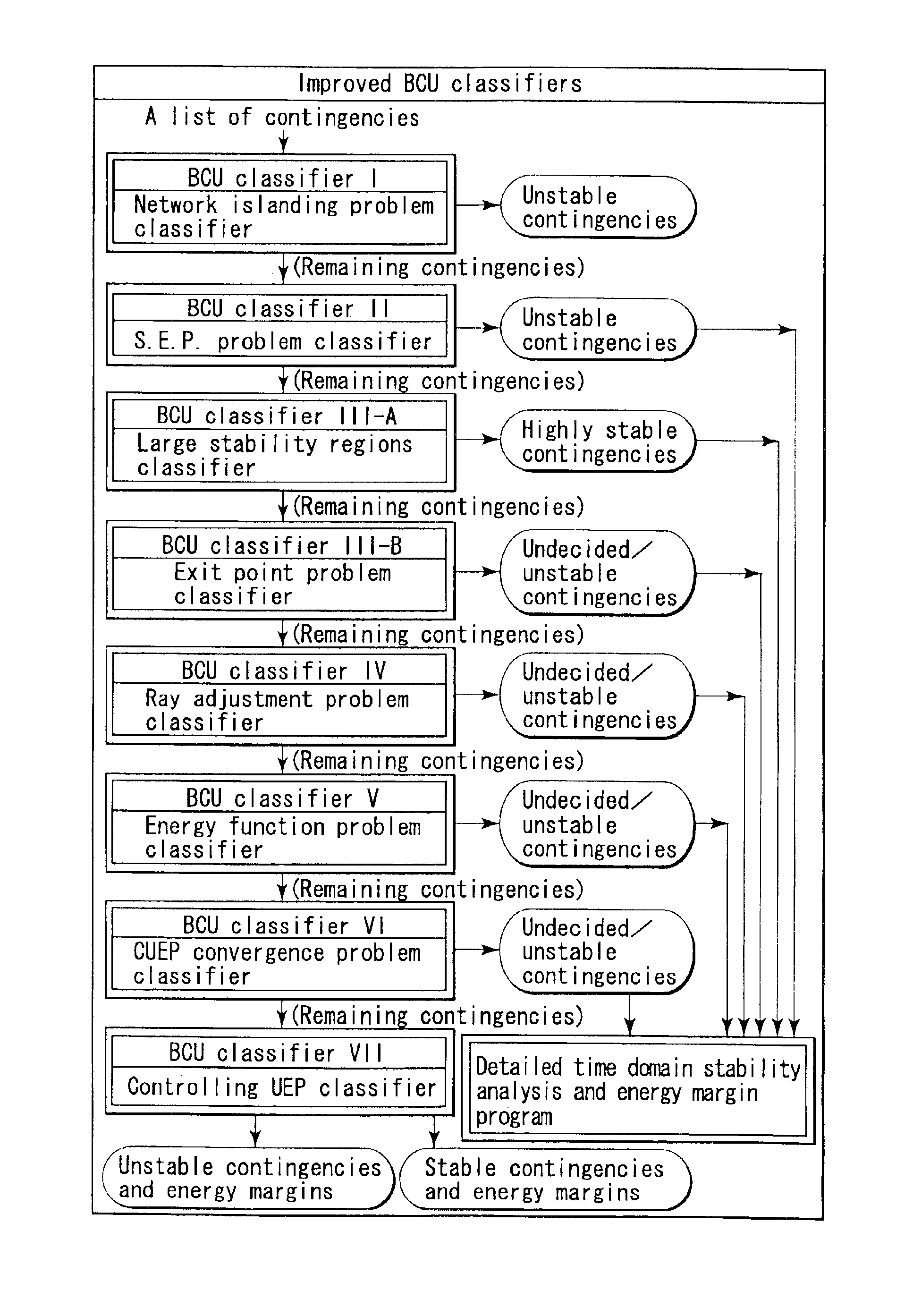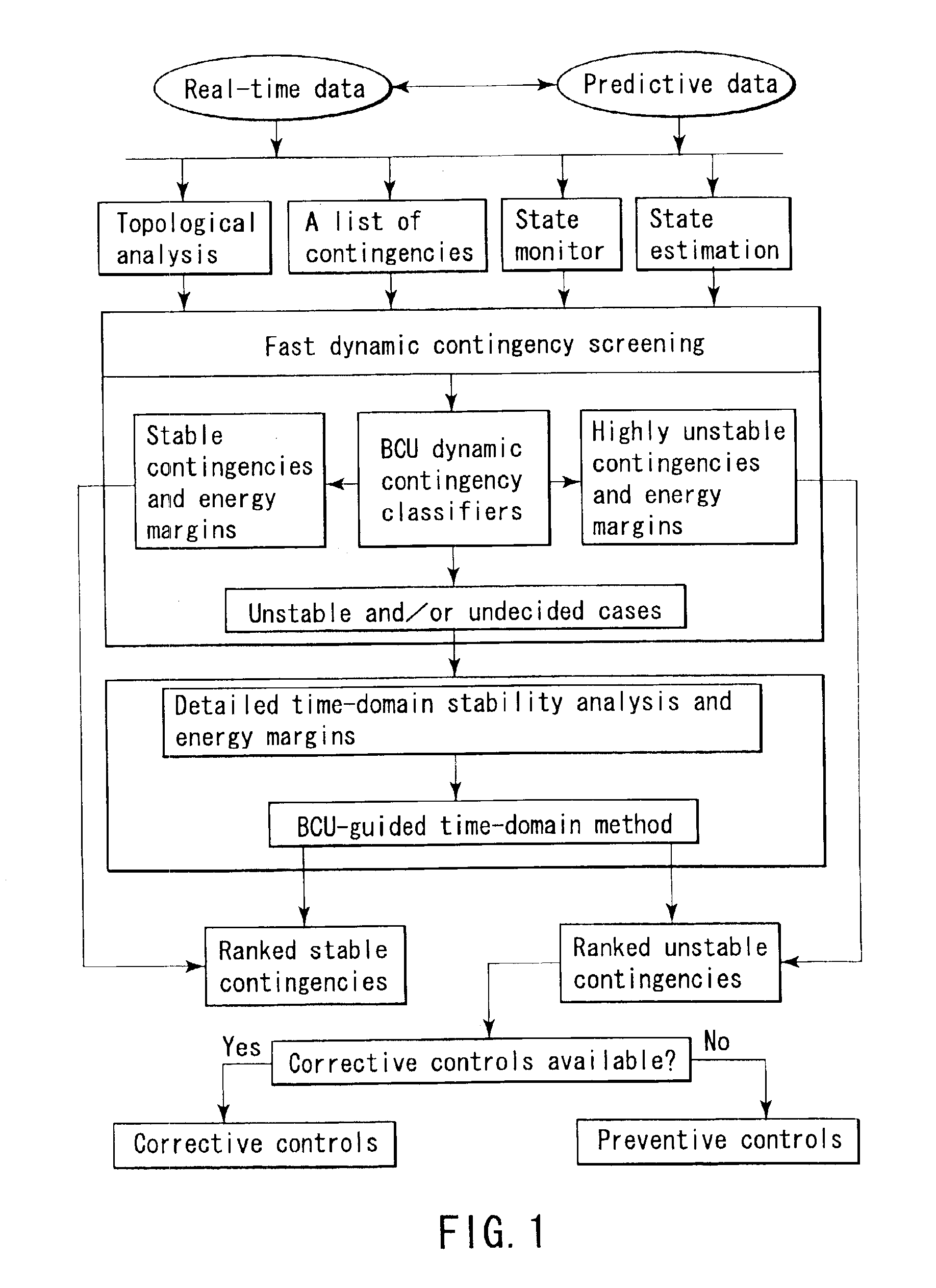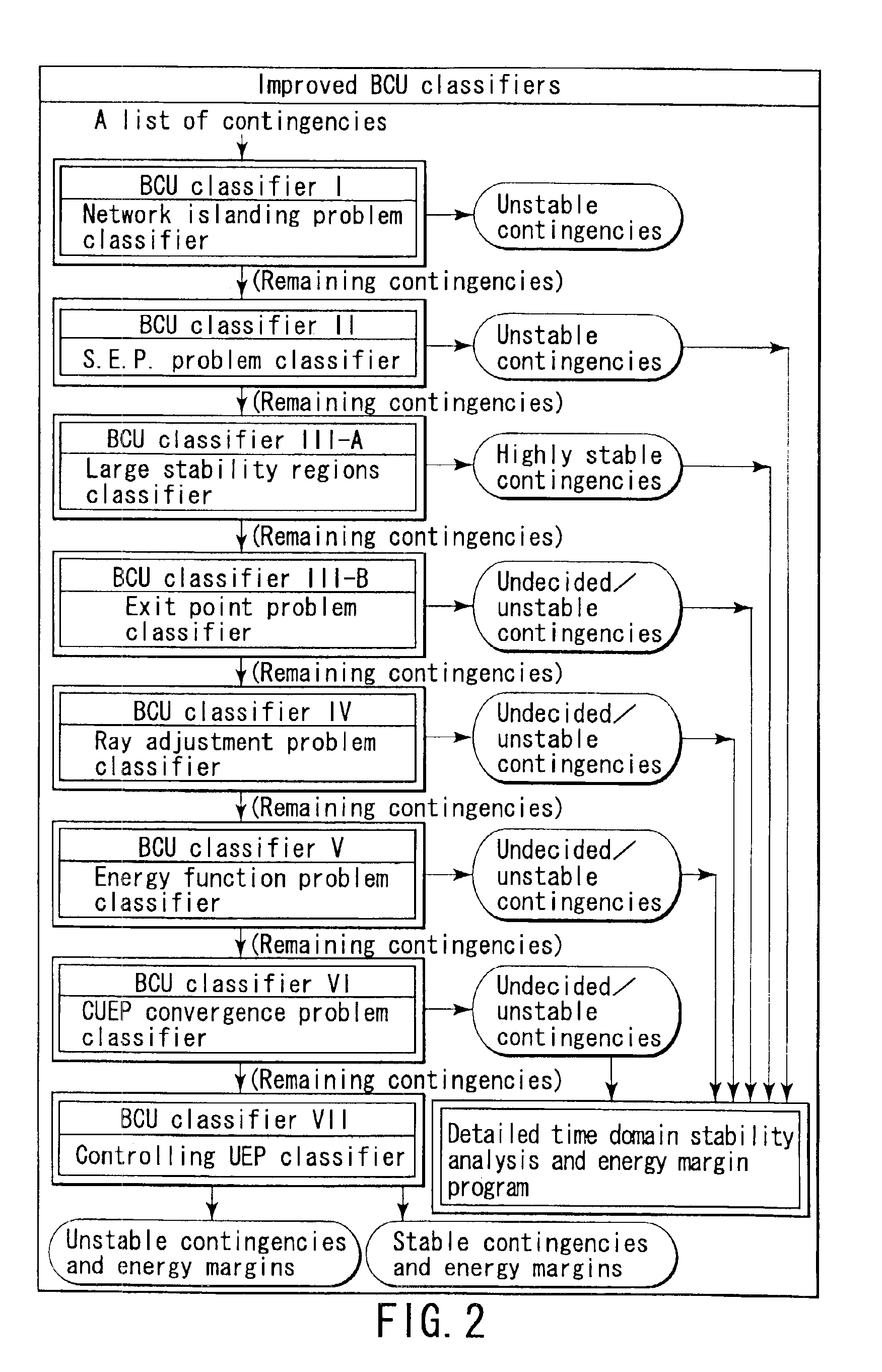Method and system for on-line dynamical screening of electric power system
a technology of electric power system and dynamic screening, applied in non-electric variable control, process and machine control, instruments, etc., can solve problems such as potential serious consequences, constant disturbance of power system, and difficulty in extension, and achieve the effect of reducing the number of tests
- Summary
- Abstract
- Description
- Claims
- Application Information
AI Technical Summary
Benefits of technology
Problems solved by technology
Method used
Image
Examples
Embodiment Construction
This invention develops a novel system, the BCU-DSA system, for the on-line dynamic security assessment and energy margin calculation of practical power systems. The BCU-DSA system is composed of the following three major subsystems:
(i) The improved BCU classifiers
(ii) A BCU-guided time-domain simulation program for stability assessment and energy margin calculator
(iii) A BCU-DSA system, a hybrid architecture of the improved BCU classifiers and a BCU-guided time-domain simulation program, for on-line dynamic security assessment and energy margin calculation of practical power systems.
5-1. Improved BCU Classifiers
The main design objective of improved BCU classifiers is to ensure that all five requirements listed above for on-line dynamic contingency screening are met. To this goal, eight BCU classifiers are developed and integrated to form the improved BCU classifiers for performing on-line dynamical security classification based on both on-line and predictive data. The eight BCU cla...
PUM
 Login to View More
Login to View More Abstract
Description
Claims
Application Information
 Login to View More
Login to View More - R&D
- Intellectual Property
- Life Sciences
- Materials
- Tech Scout
- Unparalleled Data Quality
- Higher Quality Content
- 60% Fewer Hallucinations
Browse by: Latest US Patents, China's latest patents, Technical Efficacy Thesaurus, Application Domain, Technology Topic, Popular Technical Reports.
© 2025 PatSnap. All rights reserved.Legal|Privacy policy|Modern Slavery Act Transparency Statement|Sitemap|About US| Contact US: help@patsnap.com



